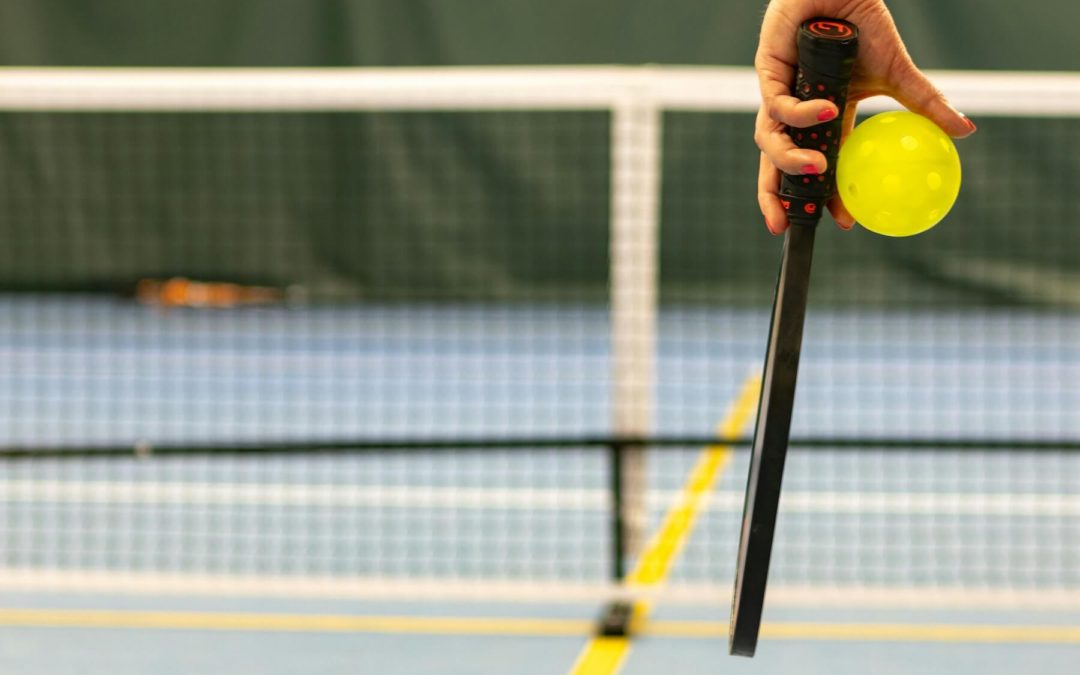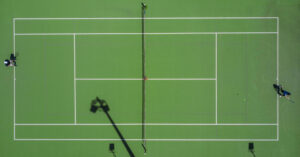Designing the Perfect Pickleball Court: Sizes, Specs, and Space Planning Essentials
Pickleball is taking the world by storm, quickly becoming the go-to sport for players of all ages and skill levels. A fun blend of tennis, badminton, and ping-pong, it’s a game that’s easy to pick up and a perfect addition to schools, parks, and sports complexes looking to expand their recreational offerings.
Whether you’re looking to introduce a new court or upgrade an existing facility, understanding the proper specifications and dimensions of a pickleball court is essential. By getting the dimensions right, you’ll maintain compliance, boost the player experience, and make your space planning more efficient. Let’s dive into the key factors in designing the perfect pickleball court that will help you create a functional and enjoyable space for all players.
Standard Pickleball Court Dimensions
Understanding the standard dimensions of a pickleball court is paramount for smooth gameplay and meeting regulations. The right size impacts the quality of play and can determine eligibility for official tournaments. Adhering to these measurements ensures a consistent and fair experience for players.
Official Court Size Specifications
So, just how big is a pickleball court? A standard court measures 20 feet wide by 44 feet long for both singles and doubles play. The total play area, including out-of-bounds space, should measure at least 30 feet by 60 feet. These dimensions adhere to USA Pickleball standards, ensuring compliance with tournament requirements.
Key Zones of the Court
The court is divided into several key zones:
- Non-volley zone (“kitchen”): 7 feet from the net on each side
- Service boxes: 10 feet by 15 feet on each side
- Baseline: 22 feet from the net
- Sidelines: 44 feet in length
The standard pickleball net height is 36 inches at the sidelines and 34 inches at the center.
ADA Considerations for Court Access
Ensure your court layout includes proper clearance for accessibility, with pathways wide enough for wheelchair access (typically 36 inches) and level ground for safe maneuvering to comply with ADA standards for public spaces.
Spectator and Coach Viewing Zones
To create the best experience for spectators and coaches, we recommend providing viewing areas at least 5 feet from the court’s perimeter, along with benches and walkways. This will help maintain a clear line of sight and allow for easy movement around the court.
Pickleball Court vs. Other Sports Court Sizes
When planning your athletic facility, it’s important to understand how pickleball court dimensions compare to those of other sports. This way, you can make informed decisions about converting existing courts or designing multi-use spaces that accommodate different activities.
Comparison with Tennis and Badminton Courts
The dimensions of a pickleball court are smaller than a tennis court, measuring 20 feet by 44 feet compared to the 36 feet by 78 feet of a standard tennis court. They’re also larger than a badminton court, which typically measure 20 feet by 44 feet for doubles play, making it an ideal option for conversion or multi-use spaces in facilities that already have tennis or badminton courts.
Why the Size of the Court Matters
Proper dimensions are essential for standard gameplay and safety. A correctly sized court provides enough space for players to move freely, minimizes the risk of injury, and ensures your facility meets the requirements for hosting official tournaments.
Indoor vs. Outdoor Court Size Considerations
When choosing the right pickleball court size, the environment plays a major role in determining layout and spacing. Indoor and outdoor facilities each have unique considerations that influence the overall design and functionality of the space.
Adjustments for Indoor Installations
For indoor courts, the ideal ceiling height is at least 18 feet, and a 10-foot clearance from the walls is recommended to allow for comfortable movement. Proper, evenly spaced lighting is essential to reduce shadows.
It’s also important to consider noise and ventilation, particularly in gymnasiums, as acoustics can be a challenge. Additionally, shared spaces (e.g., courts with basketball lines or storage areas) require careful planning to avoid interference with other activities.
Outdoor Court Spacing and Wind Buffers
Outdoor courts need extra consideration for wind, so buffer zones or wind barriers (such as fencing or landscaping) should be included to prevent gameplay disruption. Fencing also helps keep balls within the court area, while space for bleachers or spectator seating should be factored into the layout for added convenience.
Space Planning for Multi-Court Installations
When designing layouts for multiple courts, you’ll need to consider the space between courts and the overall flow of the facility. Planning ensures that each court has enough room for safe and enjoyable gameplay while minimizing common mistakes like overcrowding or inefficient layouts.
Minimum Space Per Court for Complexes
Each court should have at least a 10-foot buffer between courts to give players enough room to move safely. This buffer is typically sufficient for recreational use, but for professional complexes, you may want a larger gap and additional space for seating, player walkways, and equipment storage.
Optimizing Court Layout for High-Traffic Areas
For high-traffic spaces like school gyms, community centers, or park recreation areas, it’s essential to prioritize accessibility and efficiency. Design layouts that allow for easy movement between courts also help keep areas clear for spectators and storage. Consider traffic flow and avoid placing courts in tight, congested areas where players may be distracted or unsafe.
Pros and Cons of Temporary vs. Permanent Court Builds
Deciding between building a permanent court or using a temporary setup? It’s important to weigh the pros and cons of each option. Both have unique benefits depending on your facility’s needs, budget, and long-term goals.
Temporary Courts
Temporary setups work best for schools or parks with limited space or seasonal sports programs where the flexibility to move courts is needed. These courts are portable, cost-effective, and flexible, making them ideal for facilities with fluctuating demand.
They offer a lower upfront cost and can easily be moved for events or other uses. However, they’re less durable, require more maintenance, and offer limited customization in size and surface materials.
Permanent Courts
Permanent installations are ideal for dedicated pickleball complexes, sports centers, or facilities looking for long-term investment and higher usage with minimal maintenance. Permanent courts are durable and designed for long-term use with high-quality materials that offer better resilience and performance. They’re also fully customizable to meet specific needs and official regulations, adding value to your facility.
However, they come with higher upfront costs for construction and materials, and once built, they’re fixed in place, limiting their use for other activities.
How Court Size Affects Your Budget and Build Strategy
The overall size of the pickleball court will directly influence your material, labor, and installation costs. Larger square footage requires more surfacing, additional materials, and extended labor hours. Indoor builds typically have higher costs due to ceiling height, lighting, and HVAC adjustments, while outdoor setups might require extra spending on wind buffers and durable, weather-resistant surfaces.
Maximizing space investment should be the top priority for high-use environments like community centers or universities. Efficient planning and careful selection of materials can reduce expenses while creating a durable, high-quality court that meets regulatory standards and supports heavy traffic.
Custom Court Design: Tailoring Courts to Fit Your Facility
Adapting court layouts to unique or non-traditional spaces is key for schools, parks, and busy recreational centers. With flexible, custom configurations, you can maximize available space without compromising play quality, so every square foot works hard for your facility.
Creative Layouts for Unconventional Spaces
Innovative layouts, such as multi-use zones or angled configurations, make it possible to fit courts into unconventional spaces—whether it’s converting a community center gym or repurposing underutilized outdoor areas. Even in smaller or irregular spaces, these creative layouts ensure the court maintains a high-quality playing surface and supports a variety of recreational activities. With the right design, you can maximize your facility’s potential while delivering a seamless playing experience.
Working with a Sports Construction Partner
At Miller Sports Construction, we’re your trusted partner in custom court design. We offer expert guidance on sizing, layout, and surfacing tailored to your facility’s unique needs. Our collaborative approach ensures that your space is optimized for performance and versatility.
Partner with Miller Sports for Court Design and Construction
With years of experience creating custom athletic environments, Miller Sports Construction ensures every detail—from court size to surface materials—is tailored to your needs for an exceptional playing experience.
Ready to bring your vision to life? Request a consultation or site assessment today, and let our experts help you plan the perfect court for your space and needs. Get a quote now!
FAQs About Pickleball Court Size
Have any questions about court dimensions or design? At Miller Sports Construction, we have the answers to help you create the perfect court for your facility.
Can you fit four pickleball courts on a tennis court?
Yes, you can fit four pickleball courts on a standard tennis court by using the proper court layout and making adjustments.
What’s the smallest space needed for a pickleball court?
The smallest space required for a court is 30 feet by 60 feet. The actual playing lines should measure 20 feet by 44 feet.
What is the best surface for a pickleball court?
The best surface is a smooth, durable material like asphalt or a cushioned acrylic surface. At Miller Sports Construction, our team expertly installs racquet sports surfaces for optimal performance and longevity.


